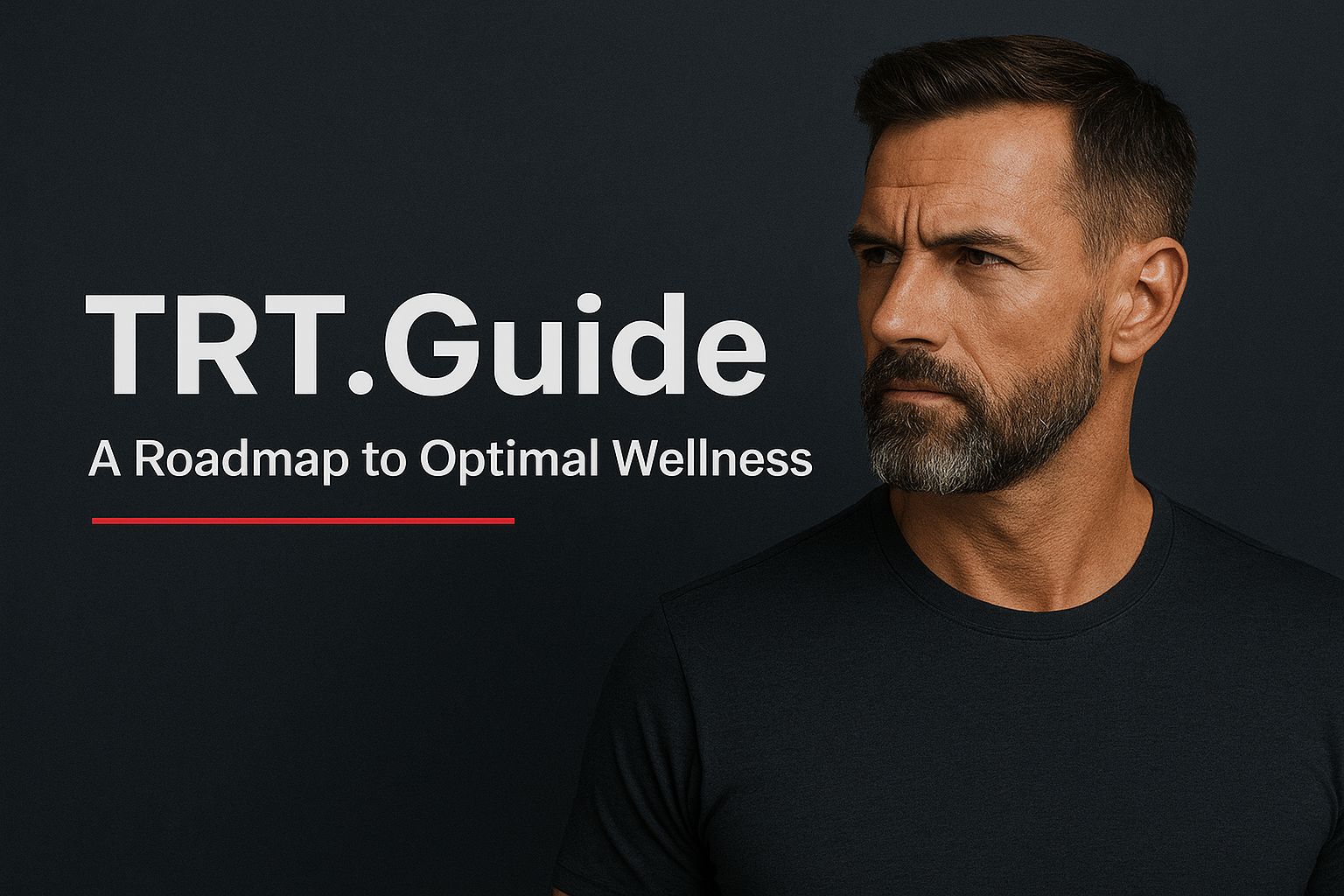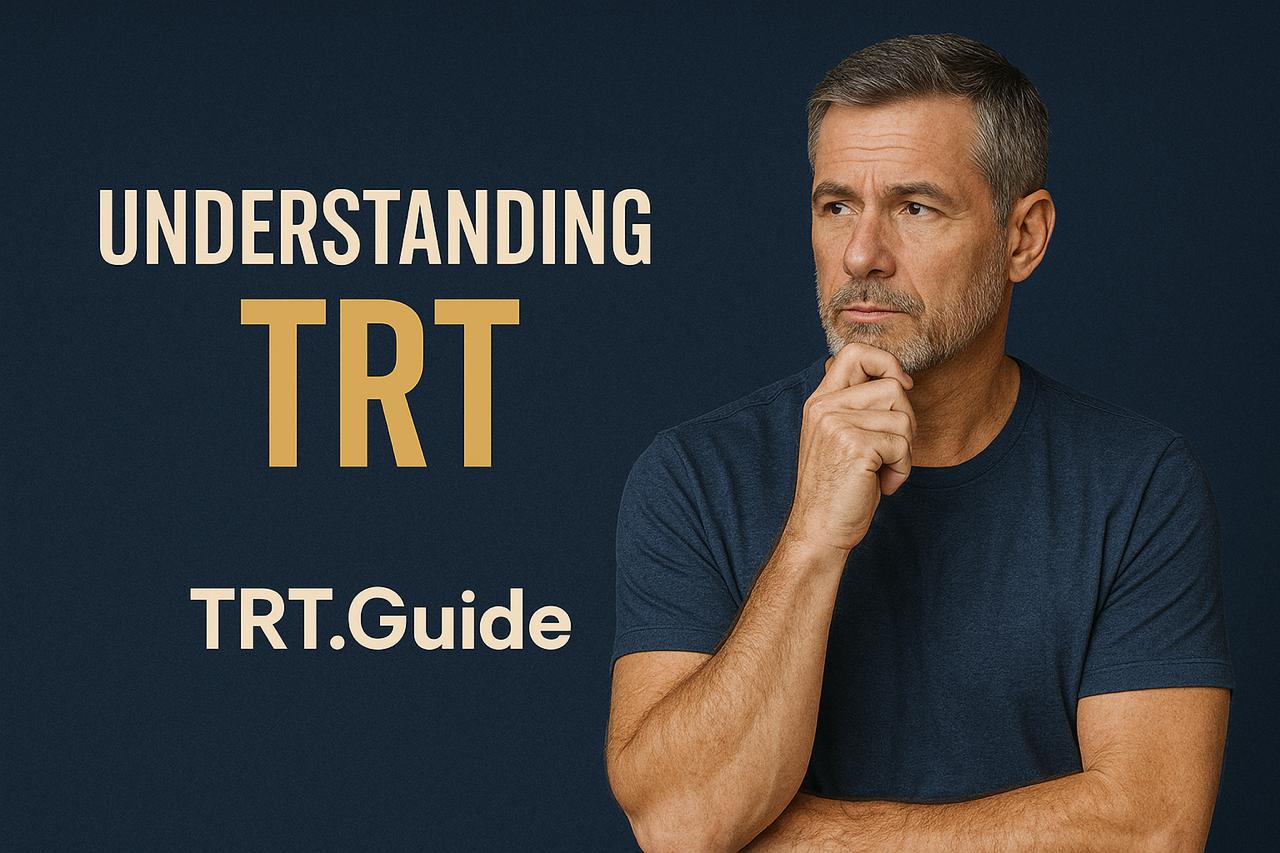Testosterone replacement therapy (TRT) is a topic that has lately come under increased scrutiny owing to its potential life change effect. If you have been lethargic or displaying irritable behavior, or your sexual desires have been low, then the question on your mind would be, “How would TRT change my life?” Understanding the changes that transpire before and after starting the treatment actually equips you with the necessary information to make the right health decisions.
This article highlights the physical and emotional transformations that occur in most cases when people start TRT. The benefits from increased energy levels to a clear mind are primarily the key to a successful transformation. You should then get to know what to anticipate on this path and how this can brighten up your days and create a sense of contentment. Let’s take a deep dive into the ocean of testosterone treatment and reveal the surprising metamorphoses that are ready to be unfolded.
Purpose of Testosterone Replacement Therapy
Testosterone replacement therapy (TRT) is primarily concerned with hormonal imbalances and is more specifically aimed at the resumption of testosterone levels in those experiencing various forms of symptoms. This therapy affects you in a positive way not only mentally but emotionally and physically too.
Definition of Testosterone Replacement Therapy
TRT is a healthy male hormone therapy for those who have serum testosterone levels lower than the prescribed range. Hormone replacement therapy through testosterone can be carried out with injections, or direct skin application using gel, or patches. Each method of application works in the same way, but the discomfort level, time, and ease of application will obviously differ. TRT helps to get rid of all the associated anxiety, lack of energy, reduced libido, and mood changes that are typical of hypogonadal conditions that are caused by hormonal defects. Studies report an increase in the energy levels, stabilization of mood, and a gain in muscle mass in patients under therapy, which are very positive trends and outcomes.
Healthcare providers usually use blood tests to monitor the in the blood levels of the hormones and when needed, they adjust the dosages so as to achieve optimal results from the treatment. It is necessary for you to have a talk with your healthcare provider about potential side effects and decide one of the treatment plans, such as acne, sleep apnea, and increased cardiovascular risk. Being aware of these issues enables you to make decisions based on information about your health management?
Who Is A Candidate for Therapy?
The typical candidate for testosterone replacement therapy is a man of 30 years or more, whose level of testosterone is declining normally due to age factors. Factors that contribute to a drop in the hormone’s rate may include among many others: obesity, chronic sickness, and the continued intake of pills. Symptoms such as constant fatigue, diminished sexual desire, and cognitive changes are indicative of people who have extremely low levels of testosterone.
It is of utmost importance to contact and talk to a medical health professional to ascertain if one is a candidate for the therapy or not. The level of testosterone deficiency in a patient is confirmed by the blood tests, which allow for a proper diagnosis of the deficiency. In specific cases, individuals who are sick with other unrelated conditions of mainly two, prostate cancer and heart disease, may not be eligible. It is vital to evaluate the unique health profile of the patient and talk to them about the possible risks before starting TRT. This systematic way guarantees the successful handling of the person’s hormonal balance.
Effects of Testosterone Replacement Therapy
The various transformative effects of TRT on the body and the mind are well seen through the treatment. This knowledge will be of help to you as you go through your journey.
When you opt for TRT, the treatment is sure to bring various physical changes that are generally positive in nature. You could observe an increase in the muscle mass and a decrease in body fat without any corresponding weight change. This is what we call bodily composition change, which means that you become muscular while losing fatty tissue. Actually, an increase in bone mass, lowering fracture risk, is also a common side effect. Skin texture looks and also feels better, with the smooth complexion and fewer wrinkles.
Also, a surge in energy is normal, and this will definitely be a big help in your daily chores and working out. Also, there are many that report recuperation in the sexual libido sphere and even the sexual efficiency as testosterone levels start to come back to exactly where it should be. It often takes only a few weeks from the beginning of therapy to experience these changes but it can take several months for the full results to come out.
Emotional and Mental Effects
TRT may have a dramatic effect on your emotional and mental state. A lot of people have positive responses when it comes to mood, and as a result, you may experience lower levels of anxiety and irritability. An increment in the energy level and the direction of this energy towards a particular goal is most often accompanied by happiness.
The patient’s mental capacity is in a positive direction parallel to his or her physical shape, and these abilities will subsequently be found to be working again at a hundred and two percent after only a few therapy sessions. A person is also likely to participate more actively in social circles and hobbies that result in an all-inclusive wellness state.
However, the monitoring of these mental modifications should always be an integral part of the person receiving treatment. By attending regular meetings, the healthcare expert ensures that any shortcomings of leading a life full of emotions are taken into consideration and addressed in time.
Before and After Testosterone Replacement Therapy
Prior to actually starting the whole testosterone replacement therapy (TRT) procedure, it is necessary to have a complete evaluation to determine the most suitable hormone levels and overall health. The idea is to know the original uncirculated condition in order to track the progress of the therapy.
Initial Assessment and Testing
The original appraisals and tests that are initially carried out for TRT cover physical, hormonal, and psychologicalobservations. Mainly the blood test will be done by your physician to check your testosterone levels and among the tests, the following are preferred to be taken; total testosterone, free testosterone, as well as the necessary estrogen and luteinizing hormone. These tests help establish hormone shortcomings as well as direct the treatment.
The doctor will first of all sign a physical assessment to determine the presence of symptoms such as weak muscle, fatigue, or mood swings. Furthermore, during the case history interview, different issues such as age, personal behavior, and other illnesses are addressed. Psychological evaluations can be done through mood disorder and anxiety questionnaires when they occur along with low testosterone levels.
During therapy, the patients should be regularly monitored to check their progress and re-evaluate their condition. Patients should plan to undergo a test follow-up every three to six months so that hormone level fluctuations could be detected on time, and the dosages could be adjusted accordingly. TRT through this route will lead to symptom management and patient care services that are effective.
Expected Results Post-Therapy
In the post-therapy the most obvious changes will relate to your physical and emotional health. Then, the majority of patients will surely feel the change and it is going to be their first easily noticeable symptom in a matter of a few weeks that they have plenty of strength and are in a good mood and libido is high. A rather physical result will often be an increase in muscle mass, more pounds of strength, and a decrease in body fat. A good number of them will find that bone density is improving and that their complexion is better.
Cognitive benefits such as improved concentration and memory function which in turn results in a more focused and engaged lifestyle, are very likely to occur. With typical emotional state of well-being, anxiety is reduced and confidence is fostered, thus leading to a better quality of life besides the improved mood of the individual.
It is important to get that each person’s situation is different: individual health and the way one sticks to prescribed treatment may have a great impact on results. Besides, to be able to recognize and manage potential side effects effectively, the best way is to have regular check-ins with your healthcare professional who also assists you in tracking your progress. This is what TRT does to your health benefits.
Potential Risks and Side Effects
Testosterone replacement therapy (TRT) brings with it some potential risks and side effects, which may have different impact from person to person. Knowing them would help you make decisions based on facts and free from any trickery regarding the treatment and your health.
Common Side Effects
Most common side effects of Testosterone Replacement Therapy, in short, are:
- Acne: The higher production of oil results in skin breakouts.
- Hair loss: Some people might get male-pattern baldness because of hormonal imbalance.
- Mood swings: The change in hormone levels mainly testosterone can be the cause of irritability and mood variation.
- Sleep apnea: Some people might experience or make worse sleep apnea due to TRT.
- Fluid retention: The bloating of your ankles or feet may bring discomfort and a certain measure of pain.
- Increased red blood cell count: This TRT side effect can lead to excess levels of hemoglobin and a possible risk of blood clotting.
Your healthcare provider should closely monitor these side effects so that necessary adjustments are suggested to properly manage your therapy.
Long-Term Health Risks
Long-term health risks that are related to TRT replacement include:
- Cardiovascular issues: The doubts are still there about the heart attack/stroke risk, the regular checks of the cardiovascular system are the crucial things to be done.
- Prostate concerns: The higher levels of testosterone can cause prostate growth. That is why it is essential to perform standard tests that will reveal if there are any signs of prostate disease.
- Liver problems: The oral form, which is the main source of pastes in the body, is giving concern due to the liver issues; to confirm this suspicion, regular liver function tests are required.
- Breast enlargement: The breast tissue can swell due to the condition called gynecomastia; the latter is a physiological disorder and you should see a doctor as soon as possible.
- Infertility: The reduction of sperm production by TRT can be a cause of temporary or even a permanent inability to have children.
Your doctor’s frequent meetings provide a fundamental aspect of the process of handling these risks effectively and making your TRT experience safe and successful.
Conclusion
Going for testosterone replacement therapy is a step that can completely change your life for the better. Throughout the period when the body is still getting used to the new hormone levels, there are indications that you are more energetic and in sounder spirits. The newly acquired physical characteristics, such as increased muscle mass, and a more even skin texture will definitely enhance your self-esteem as well as your general well-being.
One has to be vigilant and therefore, one needs to have regular consultations with the health practitioner. This way, you will be able to know the progress you are making and can manage any side effects or issues that come up. Don’t forget that everyone’s path is special and your outcomes will rely on many different factors. Welcome the changes, and that will help you create a better version of yourself, learning through informed choices and having reliable and organized care.
Testosterone replacement therapy is essentially a medical procedure that is fashioned to repossess the testosterone levels that have been lost, mainly in men past 30 who are suffering from low testosterone because of many health-related problems. Among its chief objectives is the control of the symptoms that come along with this condition such as taking fatigue, mood swings, and reduced libido relief; extending the range of wellness.
Most of the educational institutions provide monetary awards to students in order to secure achievements in studies and at the same time to motivate efforts which will lead to the good grades. Providers of these prizes believe that it will make students work harder if they get good grades as well as obtain other rewards.
However, the factual information obtained from the results of 18 randomized controlled trials with 20,286 participants shows that, far from being helpful, this practice of rewarding students for good grades is more harmful, in the measure that it significantly affects the student’s performance. Realizing that many students were basing their performance solely on grade incentives and not their abilities, incentives were withdrawn, meaning students no longer received large incentives.
The plot depicts the relationship between the female subjects’ heights and the corresponding residuals. Residuals represent the differences between actual arm length and what a linear regression model predicts to be the arm length.
The graph presents a height measurement for a female student at each point. Residuals are made by the process of finding the difference between a predicted and an observed arm span. The scatter that is seen ranges from -6 to +6 cm, which reveals the amount of the spread of the measurements. The points do not seem to follow a particular pattern and this is an example of a scenario where the regression model is a good fit to the demographic group. The bulk of the points are concentrated around zero, indicating that the observed arm spans are more or less the same as the predicted ones while others, which are few, are greatly deviated from the predictions.
Thus the graph is full of information on the model’s accuracy, which can demonstrate to the reader that the model was in a very good state of performance for the subset of female students. Nevertheless, the anomalies were there which means that individual differences among females about body proportions would be unfolded by remaining delving into the ancillary details for the outliers.
Around the clock, Augmented Reality (AR) is a game-changer in the education sector, through the coordination between digital content and natural environment. In the field of education, AR is providing students with immersive learning experiences disrupting the traditional classroom setting. This is contemporary technology holds such a great opportunity, for example, to visualise intricate ideas using various levels friendly to the target group of learners.
What are some of the TRT side effects?
Some of the side effects that are common with TRT include acne, hair loss, mood jumps, and a greater number of red blood cells. The heart and the prostate are the organs that may encounter the long-term risks, so to a health professional for regular monitoring is a must.
How is the monitoring of TRT done?
Observing the situation involves having frequent check-ins with the healthcare providers and follow-up blood test every three to six months to the hormone levels of the body. Doing this, one can make a dose change if necessary and ensure the safety and effectiveness of the therapy process. This is very important in the care.
What results do the patients reap after therapy?
Patients will feel much better in their energy levels, mood, libido, and cognitive function. The appearance of the body in the form of more muscle mass and better strength is usually experienced in a matter of weeks, though the results vary from person to person.
What is the role of a health professional in this case?
Consequently, consulting a healthcare professional is imperative before commencing TRT in order to carry out an evaluation of the individual’s health condition, to confirm the status of low testosterone levels, and to discuss the possible negative impacts as well as the positive ones of therapy. This guarantees that a rational decision is made for the management of health in such an individual, thus achieving optimal health.






